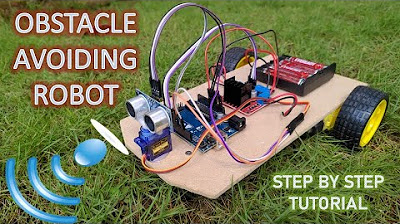How to Make an Ornithopter (Rubber band type)
Summary
TLDRIn this video, viewers are guided through the step-by-step process of building an ornithopter, a flapping-wing flying machine powered by a rubber band. The tutorial covers essential components like the fuselage, wings, and tail, using materials such as balsa wood and paper clips for lightweight construction. Key techniques include gluing, sanding, and assembling parts, along with tips on achieving optimal wing movement. The video emphasizes the importance of using lightweight coverings and proper lubrication for improved flight performance. Ideal for hobbyists, this engaging project combines engineering and creativity, encouraging viewers to explore model making.
Takeaways
- 😀 An ornithopter is a flying machine that flaps its wings and is powered by a rubber band.
- 🛠️ The fuselage is constructed from four pieces of balsa wood, with a motor support piece that must withstand rubber band tension.
- 🔧 Tubes are used to allow the wings to pivot easily, requiring careful selection to minimize play while ensuring smooth movement.
- ✂️ The tail structure consists of two balsa pieces and wire, designed to be lightweight yet effective in providing stability.
- 📏 The design of connecting rods and cranks is crucial for the synchronous movement of the wings during flight.
- 🧵 Thread is used to reinforce joints and connections, enhancing the overall strength of the structure.
- 📐 Lightweight covering materials, such as Japanese tissue, are essential to keep the ornithopter as light as possible.
- 🛠️ Lubrication of moving parts, especially the tubes, significantly improves the performance of the ornithopter.
- 🎣 Proper winding of the rubber band with a winder is key to achieving longer flight durations.
- 🌍 The video encourages support through Patreon and sharing the content on social media for continued educational resources.
Q & A
What is an ornithopter?
-An ornithopter is a flying machine that flies by flapping its wings.
What power source is used for the ornithopter in the video?
-The ornithopter is powered by a rubber band.
What materials are primarily used to construct the fuselage?
-The fuselage consists of four pieces of balsa wood.
Why is the motor support piece of balsa wood made thick?
-It is made thick to handle the tension that the rubber band exerts.
What type of glue is recommended for assembling the parts?
-Wood glue is used for some parts, while super glue or crazy glue is used for others.
What is the purpose of the brass tube in the construction?
-The brass tube serves as a strong front motor hook and crank wire, withstanding the pull of the rubber band.
How are the tail and wings reinforced?
-The tail is reinforced with thread, and the wings are secured with stoppers and glue.
What is the significance of using lightweight materials for the wings?
-Lightweight materials help improve the flight performance by reducing overall weight.
How does the crank design contribute to the ornithopter's function?
-The double crank design allows both wings to rise and fall in unison, improving stability and flight efficiency.
What should be done to prepare the rubber band for optimal flight?
-The rubber band should be lubricated and wound around a winder to achieve more turns for longer flights.
Outlines

This section is available to paid users only. Please upgrade to access this part.
Upgrade NowMindmap

This section is available to paid users only. Please upgrade to access this part.
Upgrade NowKeywords

This section is available to paid users only. Please upgrade to access this part.
Upgrade NowHighlights

This section is available to paid users only. Please upgrade to access this part.
Upgrade NowTranscripts

This section is available to paid users only. Please upgrade to access this part.
Upgrade NowBrowse More Related Video

Cara Membuat Pesawat Tenaga Karet dari Bahan Sapu Lidi

Stick n Slip| Science Experiment Grade 8

How to make a Fire Alarm System using Arduino Uno

How To Make an Origami Flapping Bird - EASY step by step!

Intelligent Obstacle Avoiding Robot || Step by Step Tutorial || Arduino Project

Making a simple Wind Turbine Model (membuat Pembangkit Listrik tenaga Angin Sederhana)
5.0 / 5 (0 votes)